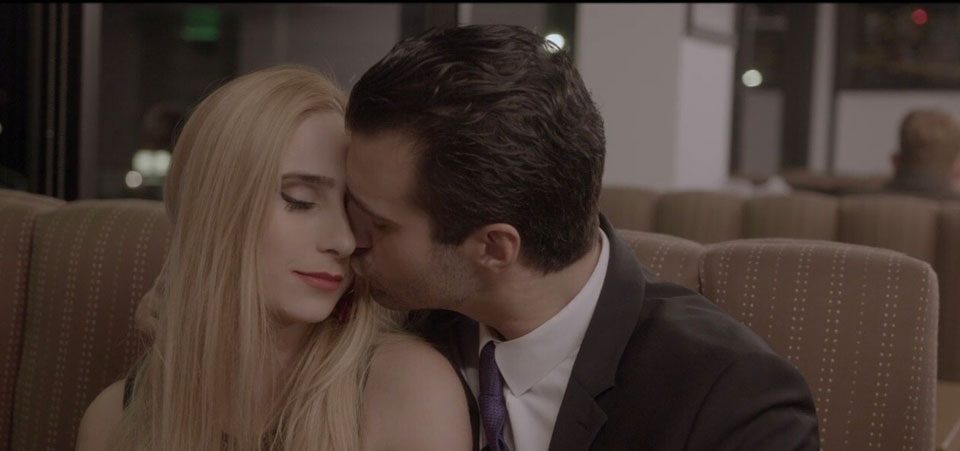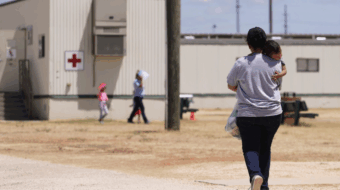
According to the National Intimate Partner and Sexual Violence Survey (NISVS), an estimated 47% of women and men will be victims of psychological aggression by an intimate partner in their lifetime. The survey highlights that 32% of women will be victims of physical violence and 16% of contact sexual violence by an intimate partner.
Intimate partner violence, widely known as domestic violence, is a problem faced by many around the globe. Not often discussed due to shame and victim-blaming, it is a topic that affects millions, who are often exasperated by lack of legal protection and resources to escape the situation.
Art has often been used to make important topics and ideas accessible to the masses. The film Invisible Flags aims to do just that when it comes to domestic violence.
Written and directed by Meitar Paz, Invisible Flags tells the story of a woman, Emily, who is a motivator, public speaker, and advocate for the safety of women. She often finds herself standing up for the abused and speaking about the women’s empowerment needed to persevere. Emily seems to have it all professionally and personally. But not everything is as it seems, and the audience is treated to a rollercoaster ride of emotions and events showcasing that domestic violence doesn’t discriminate, nor is it a topic we can afford to ignore.
Although a short film, it packs a strong emotional punch. It doesn’t flinch from the violence or the truthfulness of who is affected. Paz, who also stars as Emily, gives a harrowing performance, showing the complexity of a “strong woman” who is still vulnerable behind the scenes to intimate partner abuse. Paz also makes sure to have women of different backgrounds—including age and race—to display the unfortunate diversity of domestic violence.
Another interesting tidbit is the fact that the cast and crew of the film consist of individuals who have experienced domestic violence at some point in their lives and have chosen to face their past traumas in order to support the film’s meaningful message. The crew behind the film is an international one, bringing their lived experience into the fold.
Invisible Flags premiered this past October, during Domestic Violence Awareness month, and the audience was encouraged to take the message of the film beyond the theater, advocating for action and compassion.
People’s World was able to talk with director Meitar Paz about the film, activism, and the road forward on combating domestic violence.
When asked why she decided to do the project, Paz explained that as a filmmaker and actress, she feels that her goal is “to be a good storyteller, in an attempt to create a more woke, aware, and proactive society, that is willing to work towards a positive change and growth.”
The director noted how the COVID-19 pandemic, which confined many people to their homes, brought about a rise in cases of domestic violence against women.
“While I was isolated at home—like the rest of the world— I read an article about domestic violence that really caught my eye. It was different from any other domestic violence articles I’d read in the past. While all these articles dealt with domestic violence stories where the writing was already on the wall, and the red flags were very easy to identify, in that particular article there were no obvious red flags, no clear signs, but a very sad ending,” Paz described.
“I wanted to present a wider range of domestic violence cases, to warn and point a spotlight at the invisible red flags in relationships, in order to raise the viewers’ awareness, and help them identify and be more aware of them, so that we can hopefully prevent the next domestic violence cases and even save lives.”
According to NISVS, an average of 24 people per minute are victims of rape, physical violence, or stalking by an intimate partner in the United States. That calculates to an estimated 12 million women and men over the course of a single year. And one could argue that society’s idea of who can be a victim is in need of re-evaluation.
Members of the LGBTQ community are at an increased risk of sexual assault, physical violence, and stalking by an intimate partner. Working class households with a gross income between $15,000 and $24,999 reported slightly higher intimate partner victimizations in 2015 than other households. The Bureau of Justice Statistics National Crime Victimization Survey found that from 1992 to 2015, more than 80% of domestic violence victims did not receive assistance from victim service agencies. These facts alone show that domestic violence can often hit those in part of marginalized communities—people who already face a lack of resources.
When asked if domestic violence gets enough attention, Paz was clear in her opinion that it does not.
“The increasing amount of domestic violence cases did cause more news and reports on TV and media channels and have created a feeling that the issue is gaining more attention. However, practically, there is no apparent decrease in the number of cases of domestic violence, in the number of victims who suffer from it on a daily basis, or in the number of murders of women by their spouses.
“I feel like most news related to domestic violence speaks [about it] after the fact, and does not educate enough about the subject, or offer any relevant info, instructions, or practical ways to deal with the situation or prevent it. With [Invisible Flags], I’m hoping to keep spreading domestic violence awareness, support women, and make sure they know that they are not alone. I’m also hoping that our society will work systematically and consistently to fight domestic violence and ensure it’s an unacceptable crime,” she said.
The issue of combating domestic violence, and empowering its victims, seems to be connected to the wider picture of the rights and protections of women in society as a whole. Just as the decades-old feminist saying notes, “The personal is the political.” That’s true of intimate partner violence. Whether there will be a significant systemic change in how victims are helped remains to be seen. In the meantime, Invisible Flags is part of a movement of filmmakers trying to raise awareness of important topics that often get overlooked.
As filmmaker Paz put it, “Our goal, therefore, is to reach the maximum number of viewers, and a variety of audiences in the U.S. and around the world, in order to encourage change and create awareness, vigilance, and responsibility.”
Invisible Flags is currently on the film festival circuit, with a potential streaming release in the future.










